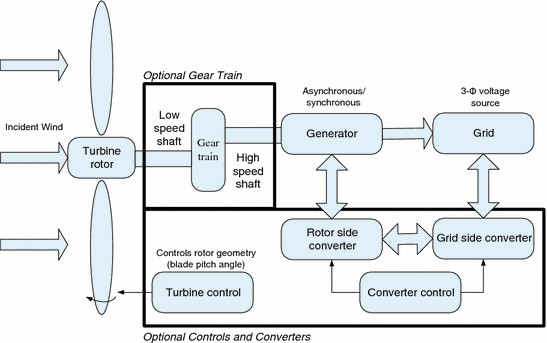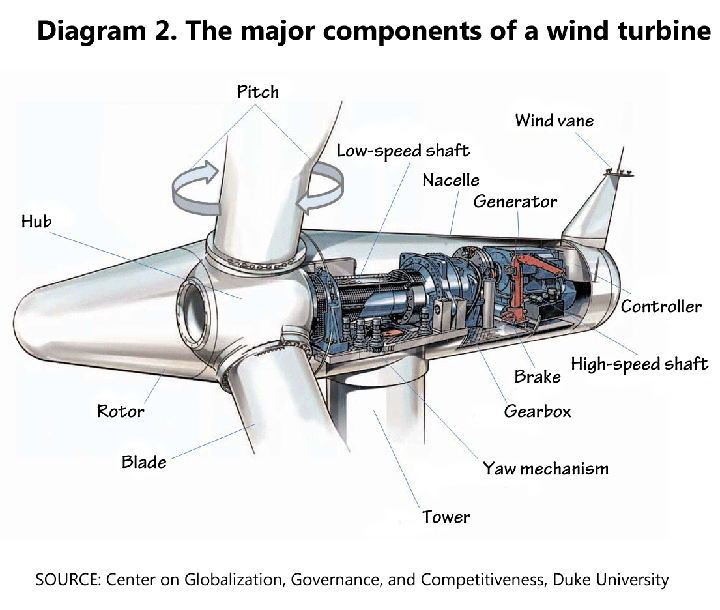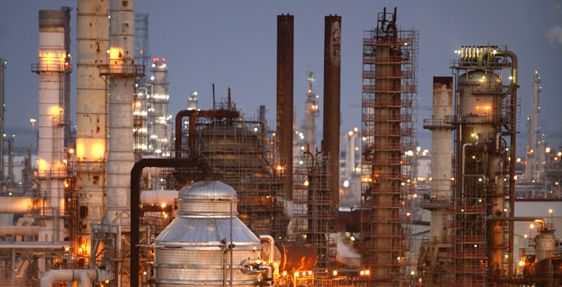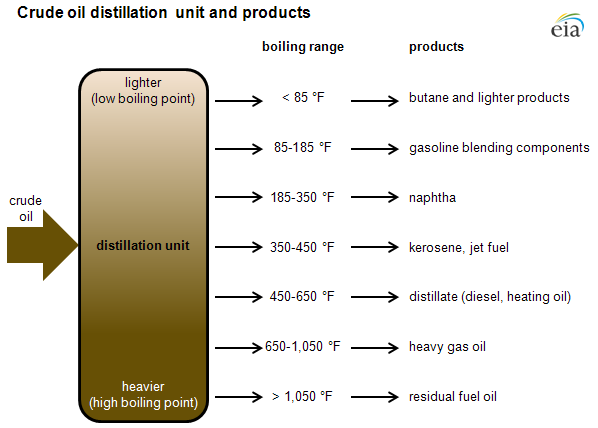Hydroelectric Power is pretty simple, yes? Build a dam, run water through turbines, get energy out. Turns out that it is a bit more complicated that that. But not by much, actually. So I am going to do a quick summary of how hydropower works, the environmental disaster that it can be (always with the tradeoffs, eh?). I was going to profile three major power plants: Hoover, Grand Coulee, and Three Gorges. But I ran out of space. Next week we will discuss pumped hydro to make the biggest batteries on the planet, and also these three dams in details.
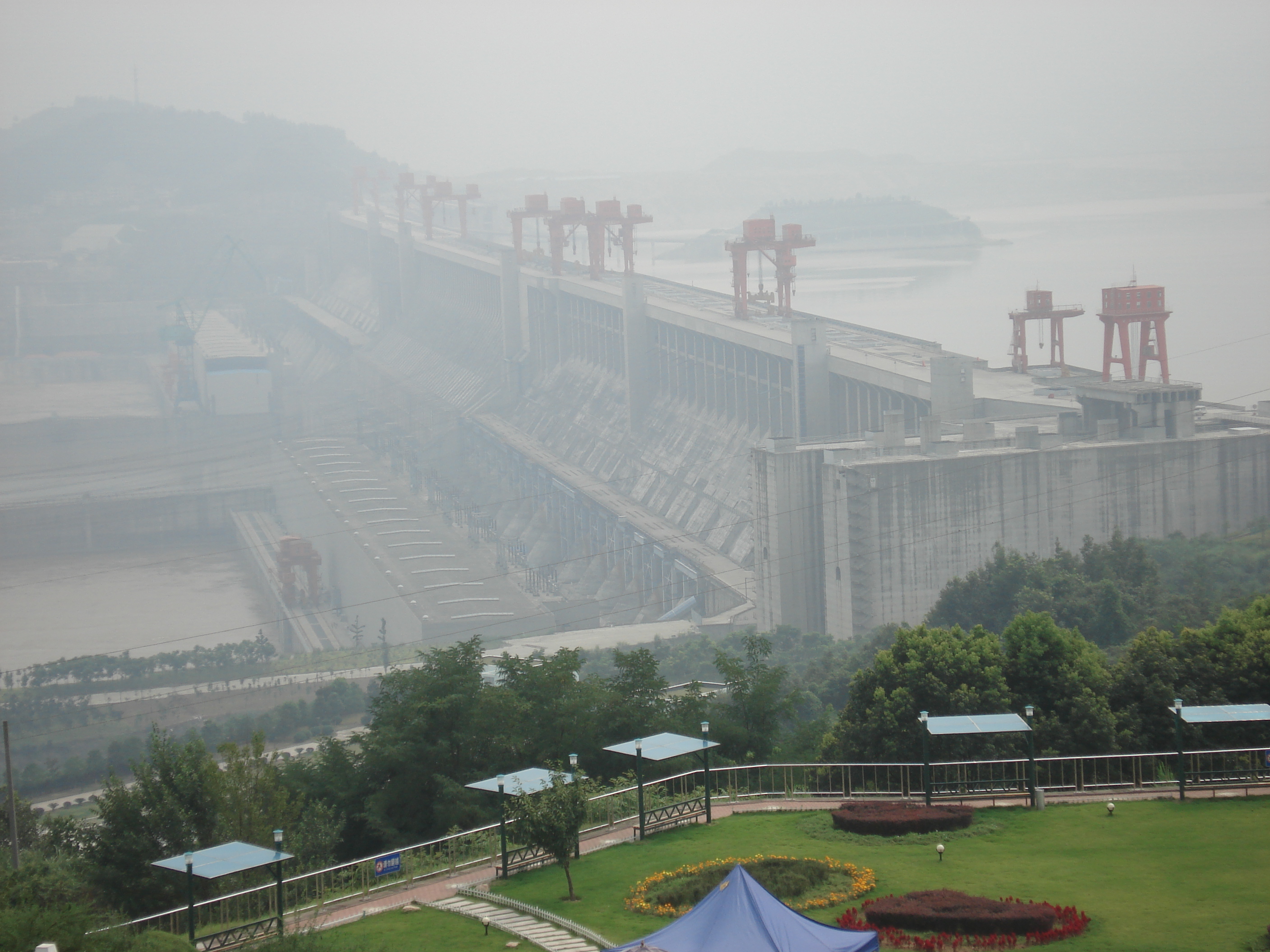
Hey! Finally! A picture I took myself! I was at the three gorges dam as they were just completing it. Also, China has air pollution issues.
How does water power work? Put simply, water falls from a height and the energy of it is harnessed by spinning a turbine. More complicated, it is mass*gravity*height:


Schematic cross-section / block diagram of a hydropower plant. link.
Now we also need to round down for efficiency. Our thermal power plants are limited by carnot efficiency, yes? And even the best don't really break 50% efficiency all that easily. What would you guess the efficiency of a hydro plant turbine is, then?
That depends on the type of turbine used. It turns out that turbines are some of the most efficient parts of any generating facility. In short, expect these guys to have 90%+ efficiency, probably closer to 95%. Different styles are used depending on the height of water drop (water moving really fast from a half-kilometer drop will have very different dynamics than water moving from a 20m drop).

The general design of a hydropower turbine. Water flows through the blades and the generator is, in turn, spun quickly. link
So let's figure out how much water we need to move to make 100MWh of electricity from a 200m drop! Now 1 MWh is  , so 100MWh
, so 100MWh 


 of water needs to be moved. In other words, it takes 18 thousand kilotons of water movement to produce 100MWh. Or, looked at another way, 18,000 cubic meters of water. Still not following? It's about 8 olympic sized swimming pools worth of water. Dropping 200m. Or 1/8 a mile, for you Americans out there that don't play in Metric.
of water needs to be moved. In other words, it takes 18 thousand kilotons of water movement to produce 100MWh. Or, looked at another way, 18,000 cubic meters of water. Still not following? It's about 8 olympic sized swimming pools worth of water. Dropping 200m. Or 1/8 a mile, for you Americans out there that don't play in Metric.
Hokay, enough maths for now. This sounds great, right? Why don't we build these things everywhere? When I take courses on how to fix the environment, there are always a majority of people that assume we can build more hydro power plants. But we can't in the US. Why not?
Well, it turns out that you need to have a large height drop to make this work. You also need a lot of water flowing into whatever reservoir is behind the dam, a ton of land behind that dam to flood, and you also need enough high terrain behind it so the water doesn't spill out everywhere. Moreover, you need a massive height difference between the upper reservoir and lower reservoir to make it work. Example: the Amazon river has a huge % of total world river flow, but we can't get electricity out of it, cause the elevation drop of it is so tiny. In short, there aren't a ton of places where where hydro works well. And imagine if a few people live there. Most aren't gonna take to kindly to their homes being put under tons of water. But you know where this can happen? China! They moved 1.3 million people to build Three Gorges. More on that later. Also, Africa has a ton of places that are building dams. Turns out that China is funding a lot of these. Cause China is starting to do humanitarian things internationally to make allies with the countries that will be the source of most world growth over the next 50 years. Upsides and downsides of a command economy, right?
Hokay, I got distracted there. Environmentalists don't like dams because they mess up fish migrations, destroy natural habitats, destroy the landscape in general, and in many countries, since hydro power is so cheap, heavy industry moves in next to them to get the cheap electricity. China is a great example (sorry I keep using you as an example, China, but I haven't read about other countries much). Along many rivers, supposedly clean hydro power goes in, only to be followed by very polluting industries. Rivers turn funny colors, the water is terrible to drink, and you can't see the sun through pollution on several days. This is getting better, cause China is making the middle-income transition, and citizens are demanding safer living environments.
I got distracted again. Other problems with dams? They tend to be on rivers. Rivers carry sediment. Much like wind can pick up grains of sand and throw then around, rivers do the exact same thing. They carry a lot of sand in them. But when they hit a damn, the river stops. The sediment load drops to the ground. After several decades, sufficient sand has dropped to clog the dam. Adding to this problem is that these sediments have a bunch of heavy metals that have been leached from the local environment. In short, a hydro dam leaves behind a mess that is quite hazardous. Cleaning it up can be difficult. Still, hydropower doesn't cause many deaths, unlike coal-fired power plants.
Focusing on that last point, what does hydro power not produce? CO2. Mercury. SO2. NOx. It produces none of the nasty things that coal fired power does (even gas-fired plants produce NOx and CO2). It tends to be very inexpensive. It is much prettier to look at a hydro plant than a coal, gas, or nuclear plant (Except on a polluted day in China, look at that picture again!).
We are running out of space in this article (I am calling them articles cause I am pretending they are articles on a web page instead of a blog post, cause I am pretentious). To summarize, hydro power is cleaner than other power supplies. It is cheaper than most. It does have its drawbacks, including displacing people and destroying land, but these are smaller than the drawbacks of coal and natural gas. It is also a nearly completely tapped resource in the US.
-Jason Munster
End-note: if you have a lot of interest in this sort of thing discussed here, I would highly suggest the book When A Billion Chinese People Jump by Jonathan Watts. It is an amazing book
.

